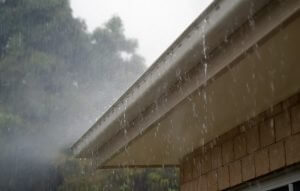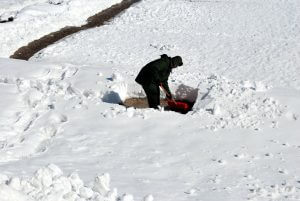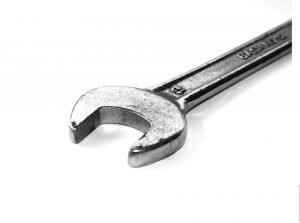Essential Outdoor Must-Haves for First Time Homebuyers
Buying Moving
Most first time homebuyers aren’t used to dealing with things like snow removal, lawn care, or repair jobs around the house. Now that you’re a homeowner, the upkeep and maintenance of the inside and outside of your home are your responsibility. But what does it take to keep the outside tidy and safe, while protecting your new shiny (and exciting) investment?
Budget Before You Buy
Settling into you your home is likely going to involve purchasing some new appliances, furnishings, outdoor items and remodeling. To no surprise, research shows that during the first two years after closing on a home sale, home buyers tend to spend considerably more compared to non-moving owners. By putting these essentials in your budget from the beginning, you will help ease the transition from renter to owner.
Outdoor Checklist for First Time Homebuyers
Doors and Windows
The first place to start is with your front door. If the previous owners were like most of us, many neighbors and friends may have a set of key to your house. The easiest, and most cost effective solution is to remove the locks from all doors and take them to a local hardware store for a re-key. Of course you purchase all new locks, but that can get expensive.
For the windows, before you start thinking about installing all new energy-efficient glass, let’s start with the blinds and curtains. True, if the windows are more than 15 years old, you may be facing some draftiness, in which case, energy-efficient windows would be a great improvement.
For the typical home, you can expect to save up to about $450 a year by replacing single pane windows with ENERGY STAR qualified windows.
But while you’re researching this bigger project, seal up the air leaks, size up the windows and give your rooms a touch of your own personality with window treatments.
Gutters, Downspouts, and Roof, Oh My…
A simple, budget-friendly fix can save you thousands of dollars in damage to your home. It’s time to haul out the ladder and check the gutters, downspouts for missing sections. Most residential gutters are made of lightweight, yet durable, aluminum and easily replaceable.  Still, if you’re not comfortable climbing up on a ladder, give a trusted contractor a ring to get the job done for you.
Still, if you’re not comfortable climbing up on a ladder, give a trusted contractor a ring to get the job done for you.
Before you purchased your new home, hopefully you asked the seller how old the roof is and had it inspected. Well-maintained roofs can last 30 years or longer, but maintenance is a big factor in whether or not that holds true. No matter how minor it may seem, it’s vital to inspect the condition of the shingles and tiles to prevent water damage.
The average cost to repair a roof is roughly between $315-$1050… not bad when you compare that to the average cost to repair water damage, which is roughly between $1,050-$3,500.
Sidewalk and Driveways
If you live in an area that gets snow, stock up on rock salt or ice-melt, check snow shovels and consider investing in a snow blower. Remember, in most states,  individual municipalities have laws which require property owners to ensure public sidewalks are free and clear of snow and ice 24 hours after the stop of snowfall.
individual municipalities have laws which require property owners to ensure public sidewalks are free and clear of snow and ice 24 hours after the stop of snowfall.
Additionally, in some cities and suburbs, homeowners are also responsible for clearing debris and fixing cracked sidewalks. It’s best to check with your city’s ordinances to find out if you need to repair cracks or more serious damage.
Bugs and Pests
No one wants to experience creepy crawlies or other unwanted guests in their home. The best way to take care of pests is to stop them before they become a problem. Keep the home clean, set out traps and bring in the professionals if your do-it-yourself efforts aren’t making a difference.
In the first (startling) census of its kind, a team of entomologists combed through 50 American houses for every arthropod they could find, and discovered each home had between 32 and 211 species!
For those bigger curious critters, heavy-duty garbage cans or bins and bungee cords to secure lids will keep scavenging animals from breaking into your trash and making a mess in your yard.
Trees, Shrubs, Gardens and Grass
If you have been renting up until now, chances are you haven’t had to mow the lawn or trim your bushes since your senior year in high school. Unless you plan to hire a gardener, a lawnmower or weed whacker might be a necessity, but do your research first and check Consumer Reports,  which regularly publishes reviews for comparing brands.
which regularly publishes reviews for comparing brands.
You’ll also want to invest in a pair of heavy-duty garden shears to keep shrubs and trees trimmed, fertilizer for the lawn, and the basics like a leaf rake, rubber hose and a push broom for sidewalk clean up.
Garage
 Finally, having a couple basic tools for the garage can come in handy, especially when you first move in. Make friends with the hardware shop owners and stock up these supplies: screwdrivers, hammer, nails, pliers, wrench, power drill, extension cord, step ladder, flashlight, and of course a level to make sure all your new pictures are hung perfectly in alignment.
Finally, having a couple basic tools for the garage can come in handy, especially when you first move in. Make friends with the hardware shop owners and stock up these supplies: screwdrivers, hammer, nails, pliers, wrench, power drill, extension cord, step ladder, flashlight, and of course a level to make sure all your new pictures are hung perfectly in alignment.
Responsibilities for First Time Homebuyers
It’s up to you to decide which of these tasks you wish to DIY and which you decide to hire a professional to tackle for you. Either way, your home will feel much homier (and you’ll end up saving more money in the long run) by having the outdoor work done properly and regularly.

